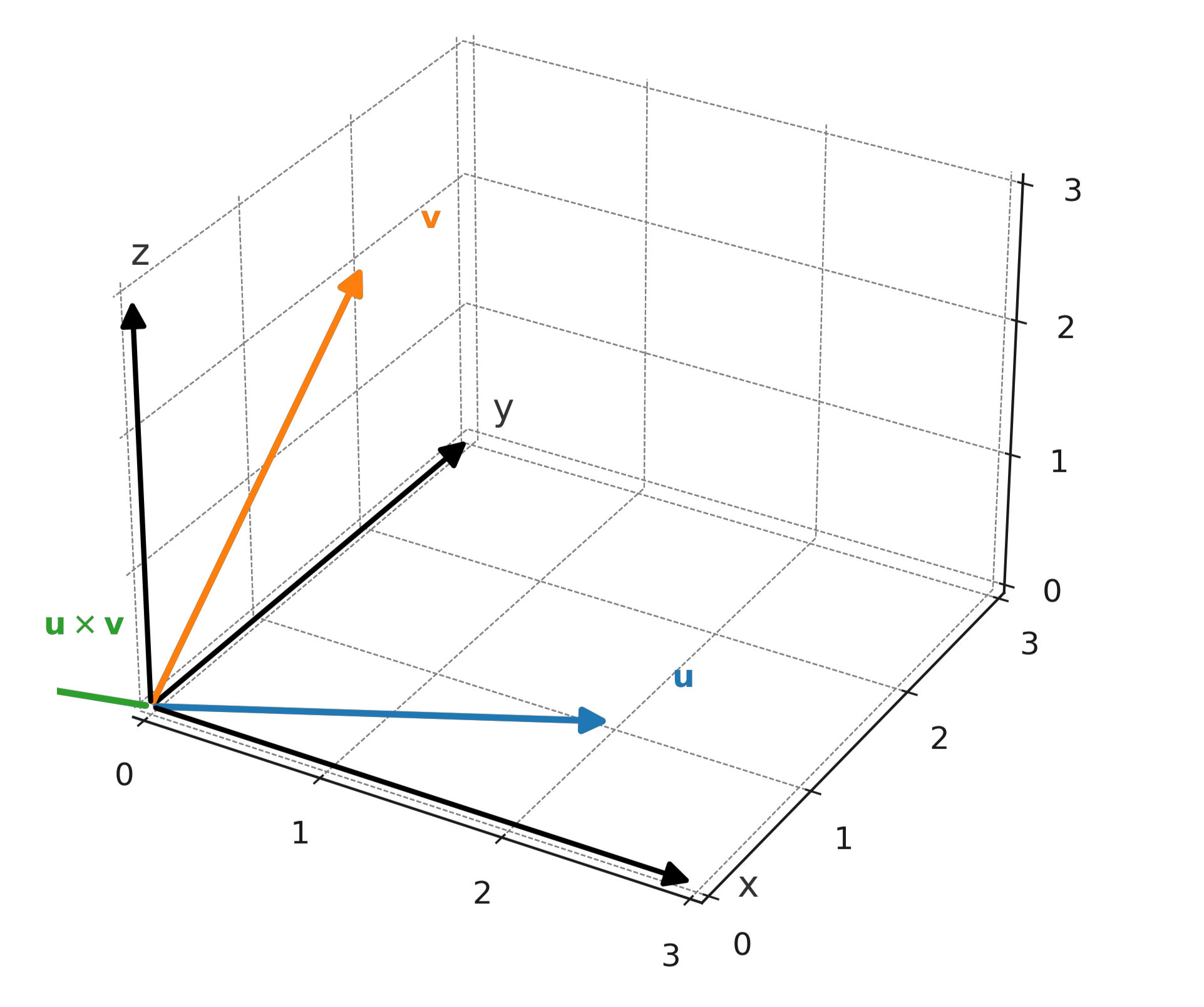Cross product
The cross product of two vectors in space is a vector that is perpendicular to both of the original vectors. The cross product is used to find areas, normal vectors, and orientations in 3D geometry.
Definition
For two vectors \( \large \mathbf{u} = (x_1,y_1,z_1) \) and \( \large \mathbf{v} = (x_2,y_2,z_2) \), the cross product is defined by the determinant:
$$ \large \mathbf{u} \times \mathbf{v} = \begin{vmatrix} \mathbf{i} & \mathbf{j} & \mathbf{k} \\ x_1 & y_1 & z_1 \\ x_2 & y_2 & z_2 \end{vmatrix} = (y_1z_2 - z_1y_2,\; z_1x_2 - x_1z_2,\; x_1y_2 - y_1x_2) $$
Example
We take \( \large \mathbf{u} = (1,2,3) \) and \( \large \mathbf{v} = (4,5,6) \).
$$ \large \mathbf{u} \times \mathbf{v} = \begin{vmatrix} \mathbf{i} & \mathbf{j} & \mathbf{k} \\ 1 & 2 & 3 \\ 4 & 5 & 6 \end{vmatrix} = (-3,6,-3) $$
The result is a new vector \( \large (-3,6,-3) \), which is perpendicular to both \( \large \mathbf{u} \) and \( \large \mathbf{v} \).
Geometric interpretation
The length of the cross product corresponds to the area of the parallelogram spanned by the vectors:
$$ \large |\mathbf{u} \times \mathbf{v}| = |\mathbf{u}| \cdot |\mathbf{v}| \cdot \sin(\theta) $$
The direction is determined by the right-hand rule: If you point the index finger of your right hand in the direction of \( \large \mathbf{u} \) and the middle finger in the direction of \( \large \mathbf{v} \), then the thumb points in the direction of \( \large \mathbf{u} \times \mathbf{v} \).

Application
The cross product is used in many areas of mathematics and physics:
- To find a normal vector to a plane
- To calculate the area of parallelograms and triangles in 3D
- In mechanics to determine the moment of a force
- In computer graphics to calculate the orientation of surfaces